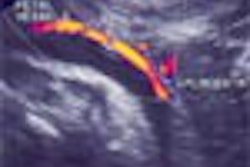
Baseball catchers are a strange lot. They choose to spend summer after summer squatting for hours in the heat, taking bat blows to the head and getting slammed by foul balls to the hand, wrist, throat, and worse.
Now, a new study claims that catchers endure injuries they may not even be aware of: microvascular symptoms that point to a high risk of digital ischemia.
"None of the patients (in the study) had sought treatment; no one came to our office," said orthopedic surgeon Dr. T. Adam Ginn of Wake Forest University Baptist Medical Center in Winston-Salem, NC. "It’s probably a silent thing. But it’s more common than people realize."
The study, presented at the American Academy of Orthopaedic Surgeons meeting in March, looked at 36 minor league ballplayers between ages 19-24 in the summer of 2001. The players were grouped according to position and whether they batted in games.
Included were 15 pitchers, seven outfielders, five infielders, and nine catchers. The players’ hands were examined with Doppler ultrasound, digital brachial pressure monitoring, and ring sizing of fingers.
According to the study findings, the Doppler exams showed "a significant incidence of abnormal flow in catchers along the path of the ulnar artery when compared to other position players (p<0.05). Doppler abnormalities were significantly more common in the gloved hand compared to the throwing hand (p<0.05)."
Several catchers had hypertrophic fingers on their catching hands, five of the nine complained of resting glove-hand pain, and all reported intermittent pain, numbness, tingling, and weakness during games.
While it's very hard to pinpoint the exact destination of a small sphere traveling 90 mph, most pitches are caught at the base of the glove's webbing in a location that corresponds to the index metacarpal head, a nexus of nerves and blood vessels.
The repeated effect of microtrauma to the hands of different types of athletes is well documented, but Ginn said his study is significant because it confirms that microvascular changes are occurring in catchers well before the onset of obvious ischemia.
"If they’re complaining, it’s probably pretty bad," said Dr. Jeffrey R. Dugas, orthopedic surgeon and clinical instructor of orthopedic sports medicine at the American Sports Medicine Institute in Birmingham, AL. "It’s an under-recognized phenomenon because it’s subclinical. Players can have some level of trouble, but no symptoms."
This is partly due to the vasculature of the fingers, Dugas noted. With two sets of veins and arteries in every finger, normal function is possible with complete occlusion of the vessels on one side of a finger.
Previous studies have shown that padding worn between the hand and the catcher’s mitt has a marked benefit to the catcher. One study found only nine of 22 minor league catchers had normal Doppler-flow measurements in their catching hand, while 21 had normal flow in their throwing hands. Each of the nine wore some additional padding, while about half of the abnormal-flow group did not (The Journal of Hand Surgery, 1976, Vol. 1, pp. 236-238).
Nonetheless, Ginn found that padding additions and mitt improvements have yet to catch up with the damage done to catchers who field as many as 300 high-speed pitches per day in games and warm-ups.
By Matt King
AuntMinnie.com contributing writer
August 21, 2004
Related Reading
Sonography useful in diagnosing carpal tunnel syndrome, July 5, 2004
Panoramic x-ray improves detection of challenging wrist fractures, January 8, 2004
Chopsticks may cause arthritis, study shows, October 28, 2003
X-rays and the boys of summer: Imaging goes to bat for baseball injuries, April 15, 2003
Copyright © 2004 AuntMinnie.com



















